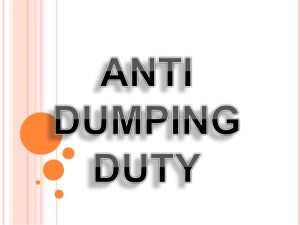Today Current Affairs: 28th December 2021 for UPSC IAS exams, State PSC exams, SSC CGL, State SSC, RRB, Railways, Banking Exam & IBPS, etc
Table of Contents
Soya Meal As An Essential Commodity:
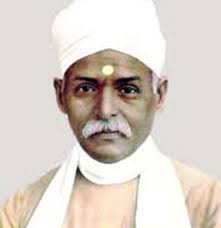
The government has notified, under the Essential Commodities Act 1955, to declare ‘soya meal’ as an essential commodity up to 30th June, 2022.
- This step is expected to stop any unfair practises (like hoarding, black marketing etc) in the market having the potential to hike the prices of soya meal.
- This will also enhance the availability of the commodity for consumers like poultry farms and cattle feed manufacturers.
About Soybean Meal:
- Soybean meal is the most important protein source used to feed farm animals. It is also used for human consumption in some countries.
- It represents nearly two-thirds of the total world output of protein feedstuffs, including all other major oil meals and fish meals.
- Soybean meal is the by-product of the extraction of soybean oil.
About Essential Commodities Act 1955:
- The ECA Act 1955, was legislated at a time when the country was facing a scarcity of foodstuffs due to persistent low levels of foodgrains production.
- The country was dependent on imports and assistance (such as wheat import form the US under PL-480) to feed the population.
- To prevent hoarding and black marketing of foodstuffs, the Essential Commodities Act was enacted in 1955.
- Essential Commodity: There is no specific definition of essential commodities in the Essential Commodities Act, 1955.
- Section 2(A) states that an “essential commodity” means a commodity specified in the Schedule of the Act.
- The Act gives powers to the central government to add or remove a commodity in the Schedule.
- The Centre, if it is satisfied that it is necessary to do so in public interest, can notify an item as essential, in consultation with state governments.
- The ECA 1955 is used to curb inflation by allowing the Centre to enable control by state governments of trade in a wide variety of commodities.
- The Ministry of Consumer Affairs, Food and Public Distribution, implements the Act.
- By declaring a commodity as essential, the government can control the production, supply, and distribution of that commodity, and impose a stock limit.
New Tariff Guidelines, 2021:

The Ministry for Ports, Shipping & Waterways has announced the new Tariff Guidelines, 2021 for the Public-Private Partnership (PPP) projects in Major Ports.
- The new guidelines have been released in consonance of Major Port Authority Act, 2021.
New Guidelines:
- Existing Scenario: The PPP concessionaires at Major Ports were constrained to operate under the stipulations of guidelines (by Tariff Authority for Major Ports (TAMP)).
- On the other hand, private operators/PPP concessionaires at non-major ports were free to charge tariffs as per market conditions.
- Concessionaire can be a person or company that has the right to sell a product or to run a business in PPP projects.
- TAMP stands abolished according to the Major Port Authority Act, 2021.
- Transition to Market-linked Tariffs: Currently, major port’s PPP concessionaires handle around 50% of the total traffic handled by all the major ports in India.
- The new guidelines allow the concessionaires at major ports to set tariffs as per market dynamics.
Major Port Authority Act, 2021:
- In February 2021, Parliament passed the Major Port Authorities Bill, 2020, which seeks to provide greater autonomy and flexibility to major ports in the country and professionalise their governance.
- It has granted port authority the power to fix tariffs, which will serve as a reference tariff for purposes of bidding for PPP projects.
- It imparts faster and transparent decision making benefiting the stakeholders and better project execution capability.
- In the Landlord Port Model, ports own the land and basic infrastructure, with operations and management being leased out to private players.
Anti-Dumping Duty:
As per Directorate General of Trade Remedies’ (DGTR) recommendations, India has imposed Anti-Dumping Duties on five Chinese products, including certain aluminium goods and some chemicals, for five years.
- The DGTR has concluded that these products have been exported at a price below normal value in Indian markets, which has resulted in dumping, causing injury to domestic markets.
- India’s exports to China during the April-September 2021 period were worth USD 12.26 billion while imports aggregated at USD 42.33 billion, leaving a Trade Deficit of USD 30.07 billion.
- Dumping is said to occur when the goods are exported by a country to another country at a price lower than the price it normally charges in its own home market.
- This is an unfair trade practice which can have a distortive effect on international trade.
- Imposition of Anti-dumping duty is a measure to rectify the situation arising out of the dumping of goods and its trade distortive effect.
- In the long-term, anti-dumping duties can reduce the international competition of domestic companies producing similar goods.
- It is a protectionist tariff that a domestic government imposes on foreign imports that it believes are priced below fair market value.
- The use of anti-dumping measures as an instrument of fair competition is permitted by the World Trade Organisation.
- ADD is a customs duty on imports providing a protection against the dumping of goods at prices substantially lower than the normal value whereas Countervailing duty is a customs duty on goods that have received government subsidies in the originating or exporting country.
WTO’s Provisions Related to Anti-Dumping Duty:
- An anti-dumping duty is valid for a period of five years from the date of imposition unless revoked earlier.
- It can be extended for a further period of five years through a sunset or expiry review investigation.
- A Sunset review/ expiry review is an evaluation of the need for the continued existence of a program or an agency.
- It allows for an assessment of the effectiveness and performance of the program or agency.
- Such a review can be initiated suo moto or on the basis of a duly substantiated request received from or on behalf of the domestic industry.
Right To Be Forgotten:
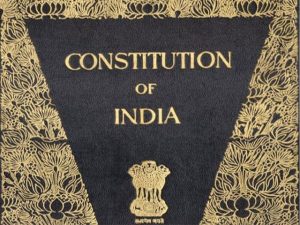
Last week, the Centre told the Delhi High Court that the “right to be forgotten” is part of the fundamental right to privacy, but added it has no significant role to play in the matter.
- Petitions across courts have been seeking enforcement of this “right” — a legal principle that is not yet backed by statute in India.
- Right to be forgotten allows a person to seek deletion of private information from the Internet. The concept has found recognition in some jurisdictions abroad, particularly the European Union.
- The Right to be Forgotten falls under the purview of an individual’s right to privacy, which is governed by the Personal Data Protection Bill that is yet to be passed by Parliament.
- In 2017, the Right to Privacy was declared a fundamental right (under Article 21) by the Supreme Court in its landmark verdict (Puttuswamy case).
- The court said at the time that “the right to privacy is protected as an intrinsic part of the right to life and personal liberty under Article 21 and as a part of the freedoms guaranteed by Part III of the Constitution”.
- At least eight petitions are pending before Delhi High Court seeking removal of private information from the Internet, court records of previous convictions and proceedings, and news reports of past events.
- Only a few have been able to get that relief from courts so far.
Good Governance Index 2021:
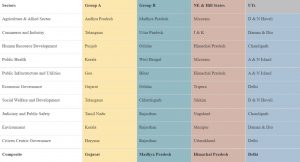
Good Governance Index 2021 was launched on the occasion of the Good Governance Day (December 25).
About the GGI:
- Prepared by the Department of Administration Reforms and Public Grievances (DARPG).
- The objectives of GGI are to provide quantifiable data to compare the state of governance in all states and union territories, enable them to formulate and implement suitable strategies for improving governance and shift to result oriented approaches and administration.
- The GGI 2021 framework covered 10 sectors and 58 indicators:
- The sectors are agriculture and allied sectors, commerce and industries, human resource development, public health, public infrastructure and utilities, economic governance, social welfare and development, judicial and public security, environment and citizen-centric governance.
- The GGI 2020-21 categorizes states and union territories into four categories:
- Other states – Group A; other states – group B; North-East and hill states and union territories.
Performance of various states:
- Gujarat has topped the composite ranking, followed by Maharashtra and Goa.
- As many as 20 states have improved their composite GGI scores in 2021.
- Delhi has topped the union territories category composite ranking.
- Among the sectors, Uttar Pradesh secured top position in the commerce and industry sector.
- In the Northeast and Hill States category, Mizoram, and Jammu and Kashmir have registered an overall increase of 10.4 per cent and 3.7 per cent respectively over GGI 2019.
Discourse On Rural Financial Inclusion:
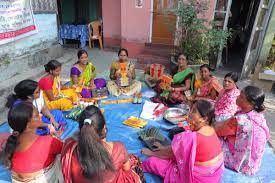
Deendayal Antyodaya Yojana – National Rural Livelihoods Mission (DAY-NRLM) organised a special event called “Discourse on Rural Financial Inclusion” on 18th December, 2021.
- As a part of the event, the facility for overdraft (OD of Rs. 5,000/- to verified SHG members under DAY – NRLM having accounts under the prime Minister Jan Dhan Yojana with Banks was launched by Department of Rural Development.
- This facility has been initiated in pursuance of the announcement made by the Finance Minister in her budget speech of 2019-20.
- Six Women SHG members from three States i.e., Rajasthan, Jharkhand and Uttar Pradesh (Two from each State) were provided with a cheque of Rs. 5,000 to mark the start of the scheme.
- It is estimated that about 5 crore women SHG members under DAY-NRLM would be benefitted from this facility eventually.
Mission SAGAR:

As part of yet another deployment undertaken by Indian Navy since May 2020 under Mission SAGAR, Indian Naval Ship Kesari entered Port of Maputo, Mozambique on 25 December 2021.
- This is the eighth such deployment in consonance with the Prime Ministers vision of Security And Growth for All in the Region and is being conducted in close coordination with the Ministry of External Affairs, and other agencies of the Government of India.
- 500 Tons of food aid has been shipped by INS Kesari to support the efforts of Government of Mozambique to cope with ongoing drought and concurrent challenges of pandemic.
- India also remains committed to supporting the capacity building efforts of the Armed Forces of Mozambique. To this end INS Kesari is carrying two Fast Interceptor Craft and self defence equipment to be handed over to the Armed Forces of Mozambique.
- INS Kesari, a Landing Ship Tank (Large) had undertaken similar mission in May – June 2020 to provide humanitarian and medical assistance to Maldives, Mauritius, Seychelles, Madagascar and Comoros, including deployment of Medical Assistance Teams of the Indian Navy in multiple locations.
- Since May 2020, the Indian Navy has deployed ships to 15 Friendly Foreign Countries under SAGAR missions.
Archbishop Desmond Tutu:

Archbishop Desmond Tutu, the Nobel Peace Prize laureate who helped end apartheid in South Africa, has died aged 90.
- A contemporary of anti-apartheid icon Nelson Mandela, he was was one of the driving forces behind the movement to end the policy of racial segregation and discrimination enforced by the white minority government against the black majority in South Africa from 1948 until 1991.
- The outspoken Tutu was considered the nation’s conscience by both, the black majority and the white minority, an enduring testament to his faith and spirit of reconciliation in a divided nation.
- He was awarded the Nobel prize in 1984 for his role in the struggle to abolish the apartheid system.
Madan Mohan Malaviya:
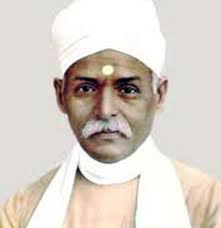
The Prime Minister has paid tributes to Pt. Madan Mohan Malaviya on his Jayanti
- Birth: 25th December 1861, in Allahabad (now Prayagraj) in Uttar Pradesh.
- He was a great educationist, pioneer, an eloquent rhetorician, and a national leader.
- He was given the title of ‘Mahamana’ by Mahatma Gandhi and the second President of India, Dr. S. Radhakrishnan gave him the status of a ‘Karmayogi’.
- In the freedom struggle, he was midway between the Liberals and the Nationalists, the Moderates and the Extremists, as the followers of Gokhale and Tilak were respectively called.
- In 1930, when Mahatma Gandhi launched the Salt Satyagraha and the Civil Disobedience Movement, he participated in it and courted arrest.
- He was elected as the President of the Congress committee (four times) in 1909, 1918, 1932 and 1933.
- Sengupta was elected Congress chief in 1933 after president-elect Madan Mohan Malviya was arrested.
- Remembered for his role in ending the Indian indenture system, especially in the Caribbean.
- Indentured labour was a system of bonded labour that was instituted following the abolition of slavery in 1833.
- Indentured labour were recruited to work on sugar, cotton and tea plantations, and rail construction projects in British colonies in West Indies, Africa and SouthEast Asia.
- Apprehensive of the possibility of the British completely damming the flow of Ganga at Bhimgoda in Haridwar, he set up the Ganga Mahasabha in 1905.
- He was a social reformer and a successful legislator, serving as a member of the Imperial Legislative Council for 11 years (1909–20).
- Popularized the term ‘Satyamev Jayate’. However, the phrase originally belongs to the Mundaka Upanishad. The term now is the national motto of India.
- Devnagri was introduced in the British-Indian courts because of Malviya’s efforts with the British government.
- Worked immensely for Hindu-Muslim unity. He is known to have given famous speeches on communal harmony.
- He was expelled from the Brahmin community for expressing his views on caste discrimination and Brahmanical patriarchy.
- He helped establish the Hindu Mahasabha (“Great Society of Hindus”) in 1915.
- He founded the Banaras Hindu University (BHU) in 1916.
- As a journalist, he started a Hindi weekly, Abhyudaya in 1907 and made it a daily in 1915 and also Hindi monthly, Maryada in 1910.
- He started an English daily- Leader in 1909.
- Malaviya was the editor of Hindi weekly, the Hindustan and Indian Union.
- He was also the Chairman of the Board of Directors of the Hindustan Times for many years.
- Death: He died on 12th November, 1946, at the age of 84
- In 2014, he was posthumously conferred with Bharat Ratna, the country’s highest civilian award.
Kisan Diwas:
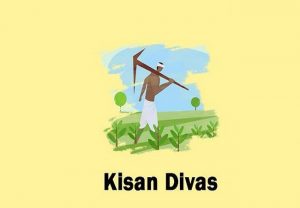
The ‘Kisan Diwas’ or National Farmers Day is observed across the country on 23rd December to celebrate the birth anniversary of Chaudhary Charan Singh, the former Prime Minister of India.
- It is celebrated to promote awareness among the citizens to understand the importance of the contributions of the farmers to the society and overall economic and social development of a country.
- Government also aims to encourage the farmers across the country by organising various activities like debates and seminars on agriculture.
- He was born in 1902 at Noorpur in Meerut district of Uttar Pradesh and was the Prime Minister of India from 28th July 1979 to 14th January 1980.
- Being a proponent of rural and agricultural development he made continuous efforts for keeping agriculture at the centre of planning for India.
- He was given the nickname ‘Champion of India’s Peasants’ for his work towards upliftment of farmers and development of agriculture throughout the country.
- He took a leading part in formulation and finalisation of the Debt Redemption Bill 1939, in order to give relief to the peasantry from moneylenders.
- He was instrumental in bringing about the Land Holding Act, 1960 which was aimed at lowering the ceiling on land holdings to make it uniform throughout the State.
- He left Congress in 1967 and formed his independent party known as the Bharatiya Lok Dal.
- He served twice as Chief Minister of Uttar Pradesh. He became Prime Minister of India in 1979.
- He was the author of several books and pamphlets, including ‘Abolition of Zamindari’, ‘Co-operative Farming X-rayed’, ‘India’s Poverty and its Solution’, ‘Peasant Proprietorship or Land to the Workers’ and ‘Prevention of Division of Holdings Below a Certain Minimum’.
DART Mission: NASA

Just two weeks after its launch, NASA’s Double Asteroid Redirection Test (DART) spacecraft has opened its “eye” and returned its first images from space — a major operational milestone for the spacecraft and DART team.
- DART will reach its target on September 26, 2022.
- The main aim of the mission is to test the newly developed technology that would allow a spacecraft to crash into an asteroid and change its course.
- DART is a low-cost spacecraft, weighing around 610 kg at launch and 550 kg during impact.
- It also carries about 10 kg of xenon which will be used to demonstrate the agency’s new thrusters called NASA Evolutionary Xenon Thruster–Commercial (NEXT-C) in space.
- The spacecraft carries a high-resolution imager called Didymos Reconnaissance and Asteroid Camera for Optical Navigation (DRACO). Images from DRACO will be sent to Earth in real-time and will help study the impact site and surface of Dimorphos.
- DART will also carry a small satellite or CubeSat named LICIACube (Light Italian CubeSat for Imaging of Asteroids).
- LICIACube is expected to capture images of the impact and the impact crater formed as a result of the collision. It can also capture images of any dust cloud formed during the impact.
- The target of the spacecraft is a small moonlet called Dimorphos (Greek for “two forms”). It is about 160-metre in diameter and the spacecraft is expected to collide when it is 11 million kilometres away from Earth.
- Dimorphos orbits a larger asteroid named Didymos (Greek for “twin”) which has a diameter of 780 metres.
Golan Heights:
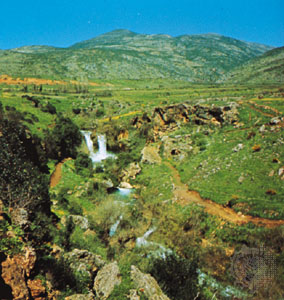
Israeli Prime Minister Naftali Bennett recently said the country intends to double the number of settlers living in the Israeli-controlled Golan Heights with a multimillion-dollar plan meant to further consolidate Israel’s hold on the territory.
- The Golan Heights is a rocky plateau with an area of 1,800km² on the border between Israel and Syria in south-western Syria.
- The Golan Heights were captured by Israel from Syria in the 1967 conflict and annexed in 1981 — a move not recognized internationally.
- The European Union said its position on the status of the Golan Heights was unchanged and it did not recognize Israeli sovereignty over the area.
- The Arab League, which suspended Syria in 2011 after the start of its civil war has said the move is “completely beyond international law”.
- Egypt, which made peace with Israel in 1979, said it still considers the Golan as occupied Syrian territory.
- India has also not recognized Golan heights as Israel territory and has called for the return of Golan Heights to Syria.
- In 2019, U.S. President Donald Trump has announced that the US may recognize Israeli sovereignty over the Golan Heights.

